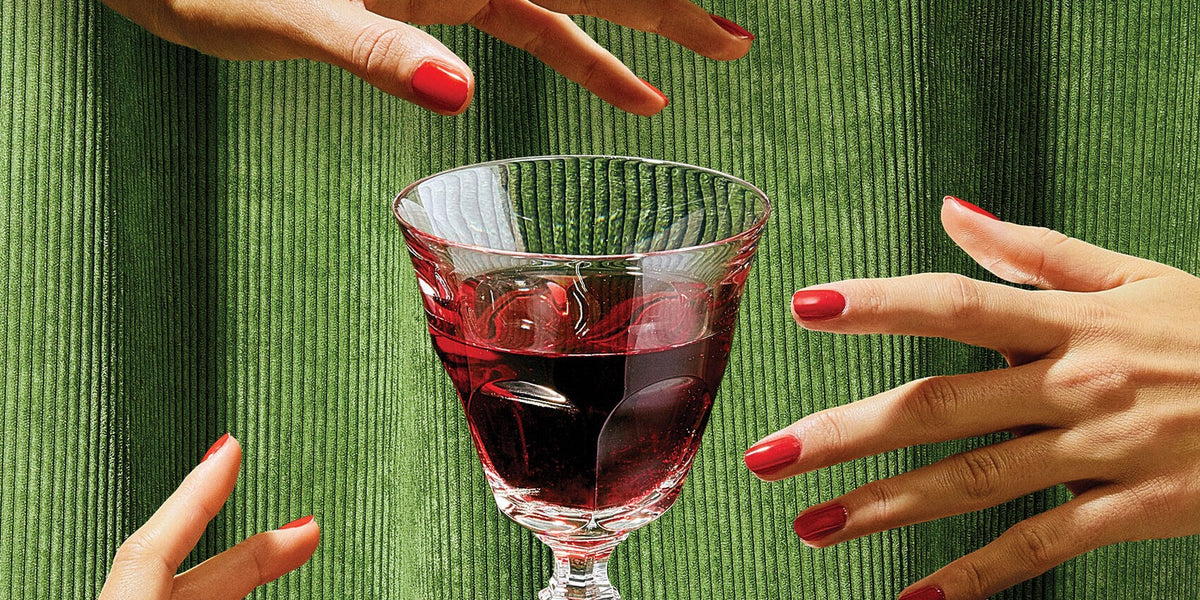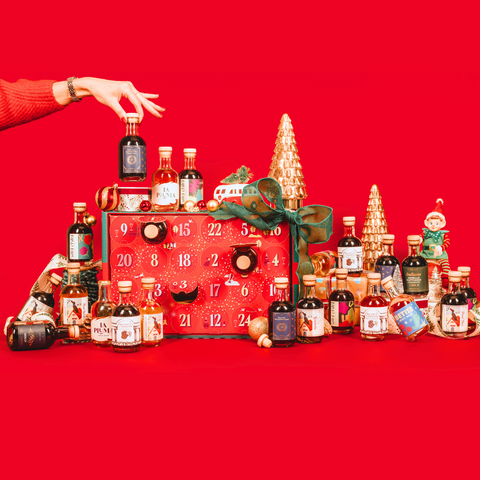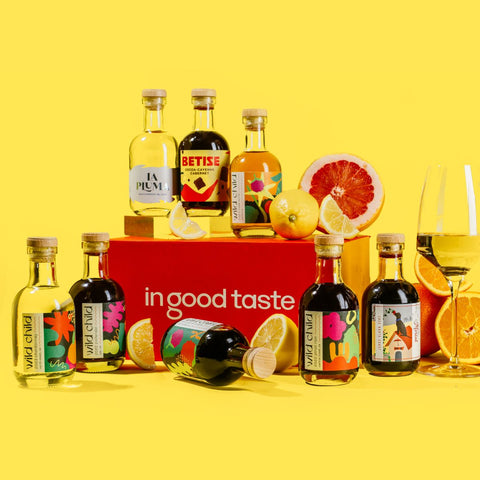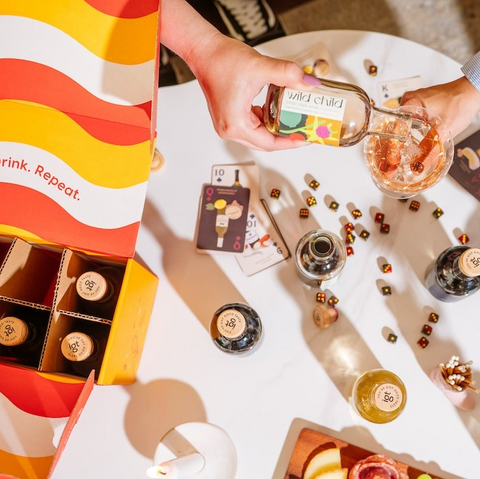A Simple Guide to Drinking & Enjoying Wine
Walk into your local wine store these days, with bottles lining the walls, shelves, and racks, and you’re likely to faint from overstimulation. With such a wide variety and no shortage of people sharing their views on “the best wine," it can be hard to discern fact from fiction. Never fear: In Good Taste is here to help wine novices and virtuosos alike to navigate the wine world with ease. Here are ten things we think everyone should know about wine.
1. Labels can tell you A LOT!
The label on your wine bottle can tell you more than just the vintage and alcohol content (though those things are definitely very important).
For instance, while both are made from the chardonnay grape, you may be amazed at the variance in flavors between a Napa Valley Chardonnay and a Chablis (pronounced “shah-BLEE”). The former will be packed with aromas of baked apples and cooked lemon, whereas the latter unoaked Chablis is celebrated for its purity in aroma and taste, and will be void of the classic California notes of butter and oak. When searching for a Riesling, keep in mind that a Riesling with a lower alcohol percentage will give way to sweeter wine types than a Riesling with higher alcohol content.
A general rule of thumb is that “Old World” wine coming from Europe may be significantly more earth-driven, with enticing notes of mushroom, tobacco, or barnyard, compared to more fruit-centered wines coming from New World regions, such as South America or the U.S.

2. Price is not always indicative of quality
You do not have to spend $200 to enjoy a nice bottle of wine. Three main factors to consider when looking into the price of wine are its vintage, oak, and origin.
For instance, a solid Barolo may cost you between $75–100. Aged in oak barrels for at least three years, this wine still has "room to grow," so to speak. A Barolo wine is great to save for special occasions as these can continue to age for 10 years or more in the bottle after they have been released.
In contrast, In Good Taste offers two Cabernet Sauvignon wines out of California, priced at $25–35; they present many of the same qualities and characteristics found in cabernet, which is great to drink when you buy it, with a slightly lighter body. Bold, audacious, and fruit-forward, the Cabernet Sauvignon from Alexander Valley and Cabernet Sauvignon from Paso Robles present the cabernet grape infused with the elements of their respective regions.

3. Most of the wines sold on the market are meant to be enjoyed immediately
It may sound shocking, but it’s true: about 90% of the wines sold each day are produced not to be cellared and aged but to be enjoyed within 18 months of production. And while young wines typically have more astringent tannins, simply aerating or decanting your wine can help to soften or mellow these and help enhance other aromas and flavors that may have been suppressed in the bottle.
No need to overthink whether or not you should save that bottle of Riesling until your 10th anniversary; you should probably just go ahead and drink it. This includes most of your most commercially popular wines. Order, drink up, and restock!

4. The best way to learn is to sip!
There are so many types of wine on the market, with different regions, varietals, winemaking styles, etc. The best way to learn about and get familiar with the wines you like is to taste them!
One of the great things about In Good Taste's tasting kits is that they help you enjoy and learn about many different varietals you may not have tried before. Our tasting wine flights feature eight six-oz bottles so you can try new wines with minimal commitment. Maybe you will taste something that blows you away and want to taste and learn more about that particular wine. On the other hand, you may taste something you are not really a fan of, which is fine too! It’s all about learning what pleases your palate!
Experienced sommeliers travel to taste different wines in different regions. W are constantly trying to explore and learn. But you do not have to be a wine pro to do this, just a lover of wine. Travel the wine world from your living room with Tasting Flights from In Good Taste.
5. Grapes will taste different coming from different regions.
Originating in France, the cabernet sauvignon grape is now grown all over the world, and the terroir ("tear-wah") – the geographic topography, soil, and climate – of each region imparts its own unique twist on this adaptable grape.
Cabernet-based Bordeaux wines are full-bodied wines that smell like currants and the minerality of wet rocks. While a Cabernet from Sonoma Valley is rich and full-bodied, with notes of jammy dark fruit and spice, a Cabernet from Chile tends to be more medium-bodied, with herbal and chocolate notes.
If you’ve explored In Good Taste's California Wine Mixer, we compare and explore two Cabernet Sauvignons, grown in two vastly different California regions: Cabernet Sauvignon grown in Paso Robles, and Cabernet Sauvignon grown in Alexander Valley. If you have not tasted our California Wine Mixer, now you have a reason to!

6. "Clean" wine is not a thing
You've probably heard of it: "clean" or "chemical-free" wine. While these terms may seem transparent, many in the wine industry see them as merely a marketing ploy to infiltrate the booming wellness market and leach away more of your hard-earned money.
All wine (and beer and cheese) has sulfites. These sulfites, or sulfur-based salts, are a natural product of the fermentation process. Sulfites help to preserve the wine and protect from premature oxidization, bacteria, and yeasts.
Many large commercial winemakers add additional sulfites, along with other FDA-approved additives, to stabilize the wine and limit vintage variation so that each batch tastes the same. If you want to avoid these additives, look for organic wines that do not contain added sulfites.
Further, wine does not contain any artificial flavorings. While you may taste baked apples, vanilla, and butter in your glass of Chardonnay, these occur naturally using centuries-old methods of fermentation, aging, and oak. Wine cannot be made by simply pouring grape juice into a barrel and leaving it to ferment. There is a science that goes into winemaking.

7. Wine is subjective
Although there are general characteristics to look for in grapes from certain regions, overall, wine aromas and flavors are subjective. From the same bottle, I may smell pithy grapefruit, and you may smell oranges. I may taste jammy, cooked fruit, and you may taste leather and smoke. The differences seem vast, but the truth remains: wine is a subjective element.
We recognize tastes and aromas that are familiar to us, those that trigger memories. We all have different experiences, and this actually affects our senses. One of the best things about wine tasting is sharing and comparing the aromas and flavors you pick up in each wine.
8. There are no rules!
The only rule of wine is there are no rules! We’ve all heard that, with red meat you should enjoy red wine. For the most part, that works.
However, if you want to try a red wine with your fish, try an elegant Red Burgundy. If you want white wine with your steak, try a full-bodied California Chardonnay.
For those rebels who want to enjoy a cold glass of wine on a hot day, add a few ice cubes or frozen grapes to your wine. There is no shame in the wine game!
9. Wine is only as complicated as you make it.
Wine is fun and meant to be enjoyed, plain and simple. Sure, you can study the terminology and technicalities if you’re interested. But at the end of the day, all you need to enjoy wine is simply a wine opener and a glass. You do not have to stress yourself about whether or not your wine will pair well with your dinner.
Here is a tip: choose a wine from the country that your dish is from; as they say, what grows together goes together. Simple. It is wine, not rocket surgery – your tongue will tell you if you’ve got it wrong.
10. Wine is best paired with friends and loved ones.
Few things are more enjoyable than drinking a nice glass (or bottle) with friends and loved ones. Talking about what you're tasting in the glass while unwinding at the end of a hectic day. Rosé is great, but enjoying rosé on the beach with friends is better.
At In Good Taste, we are proud to help connect friends, family, and colleagues scattered throughout the country while they indulge in their love of good wine.










